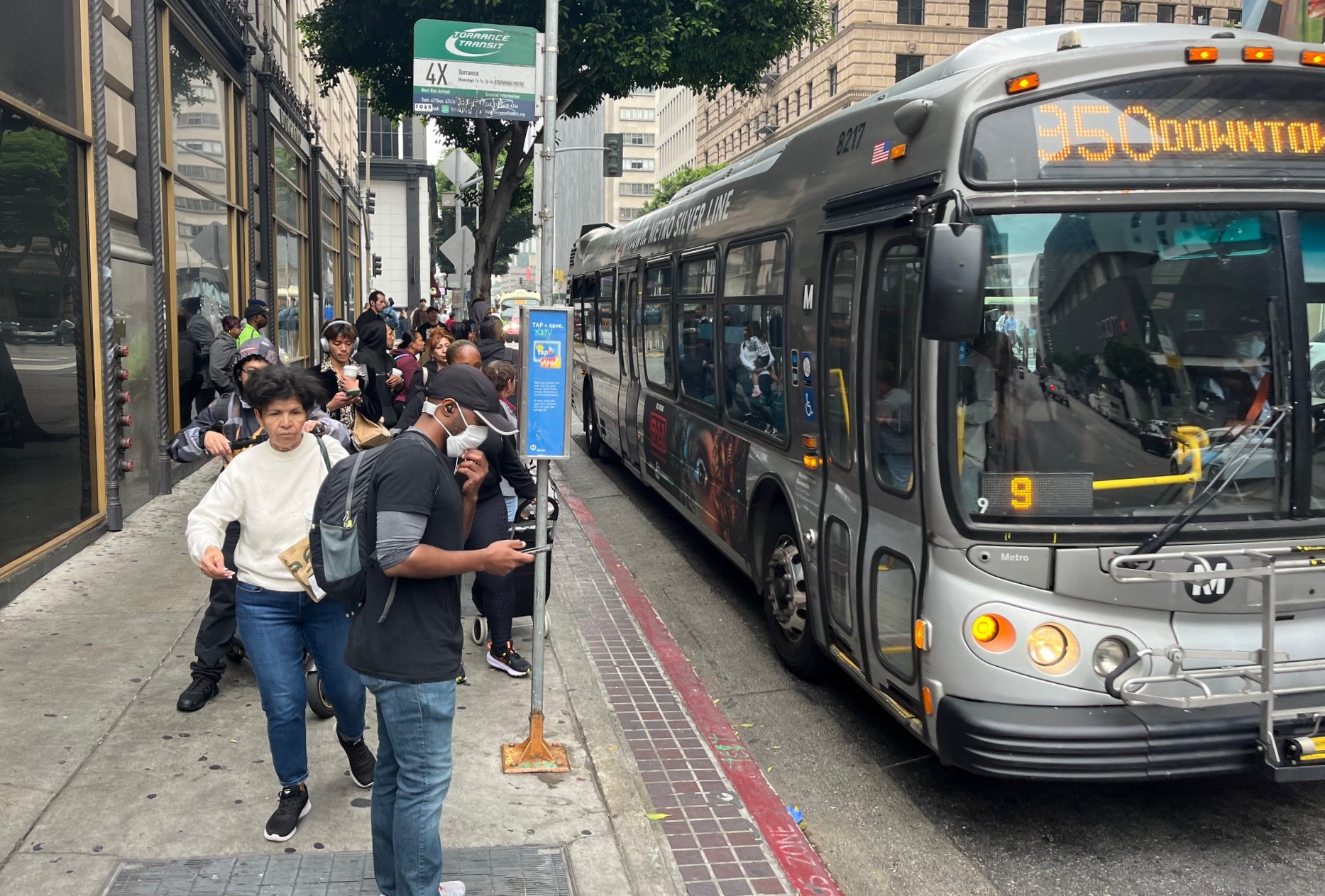
Last night, representatives from the Department of Conservation's Division of Oil, Gas, and Geothermal Resources (DOGGR), Plains Exploration & Production (PXP), the oil company in charge of the Baldwin Hill Oil Field, and other officials went head to head with members of the Greater Baldwin Hills Alliance and a highly a skeptical community in a standing-room-only meeting at the Kenneth Hahn State Recreation Area Community Center.
They were there to talk about fracking -- a controversial practice that aims to access hard-to-reach deposits of oil and natural gas by enhanced drilling techniques that inject a mixture of water, sand, and toxic chemicals into the ground — and the steps PXP has taken to increase health and safety protections in the oil field, the largest contiguous urban oil field in the country.
The community has reason to be skeptical. In early 2006, noxious fumes released by PXP's drilling operations wafted through nearby residential areas. Complaints about the odors came from as far as two miles away, and a number of residents evacuated the area.
Residents were stunned to learn at the time that, although PXP had begun one of the most extensive drilling programs in the state – drilling only hundreds of feet from some residences – there had been no environmental impact review as required by the California Environmental Quality Act (CEQA). Moreover, DOGGR, a state agency, had been the one to issue PXP the permits without requiring the CEQA review.
The 2008 lawsuit filed by community members resulted in a settlement whereby PXP agreed to reduce the number of wells drilled, commission additional studies on health and air quality, and determine the effects that fracking could have on the surrounding area.
To study the effects of fracking, however, said the PXP representative, one must actually do some fracking.
Hence the need to come before the Community Advisory Panel to report to concerned residents about their activities and give neighbors the opportunity to voice their concerns, help shape the fracking study currently underway at the oil field, and continue to push for more transparent communication related to all fracking activities going forward.

DOWNWARD DOGGR
The DOGGR representatives appeared as part of the agency's commitment to be more responsive to community needs going forward. One staffer acknowledged that, “You haven't seen DOGGR in meetings before,” and that, “That's probably been a bit of an oversight.”
The community did not find their presence particularly reassuring.
Statements such as “DOGGR doesn't know where all the wells are in California” and “We are not required to be told” where fracking is occuring, although in line with existing law, evoked cries of disbelief, disgust, and lots of angry head shaking from participants.
But aren't you the monitoring agency? some wanted to know.
Yes, they said, but there is no regulation specifying that companies report where they are fracking. DOGGR monitors the integrity of wells and requires operators to conduct pressure tests and submit that data.
The idea that DOGGR was relying on the honesty of companies instead of conducting the tests themselves provoked more outcries and even questions about who was paying the DOGGR representatives' salaries.
Trying to inject the voice of reason, Damon Nagami, Staff Attorney from the Natural Resources Defense Council, encouraged participants to contact their state senator and ask them to support AB 591, a bill requiring that oil and gas companies provide DOGGR with information regarding the chemicals injected, the source of the water used in the process, how much water was used, whether any radiological components were injected and what happened to the components once underground. The bill would also require public disclosure of where fracking was occurring and whether it was near fault lines, a big concern of many of the community members who feared that the fracking could trigger earthquakes.
Some pushed the DOGGR representative on whether he would try to hold companies accountable for this information, regardless of whether the bill passed, and were not pleased with his answer when he backed away from a commitment. People muttered under their breath about how DOGGR had dragged their feet on holding companies accountable in the past. The agency had even sided with oil companies who opposed the legislation for fear of having to release trade secrets — their chemical “recipes” used in fracking — and potentially losing their competitive edge.
Just as the DOGGR representatives seemed to breathe a sigh of relief that they were going to make it through the meeting relatively unscathed, Paul Ferrazzi, a member of the Advisory Panel raised his hand and asked why DOGGR was basing its practices on discredited science. He cited a task force report on methane gas migration that DOGGR was basing its safety assessments for the area on, despite the fact that the report had been widely discredited several years ago.
Somewhat taken aback, the DOGGR representatives looked at each other, said they weren't so familiar with the report, stammered a bit, grabbed some paper, started writing things down furiously, and then handed the panel member their business cards, saying maybe they should chat.
A man who had been shouting out things all night finally lept to his feet and announced everyone needed to contact their local representatives to get AB 591 passed so that they could keep DOGGR in line.
"And on that note..." the panel chairman said with an audible sigh, the meeting was adjourned.
The meeting was facilitated by Community Health Councils, Inc., with the help of the Greater Baldwin Hills Alliance.




